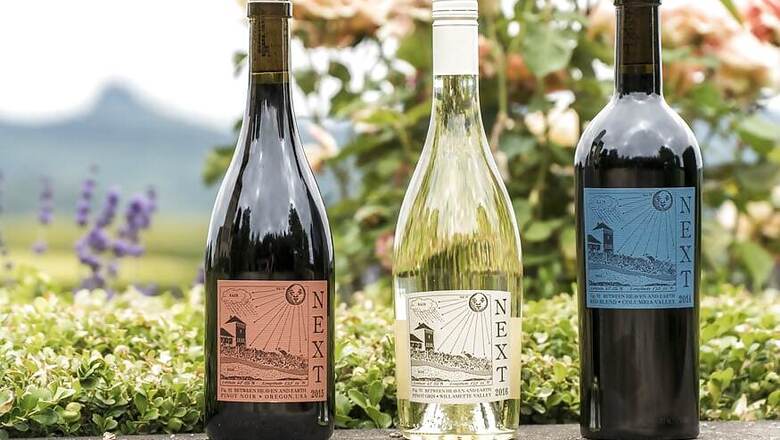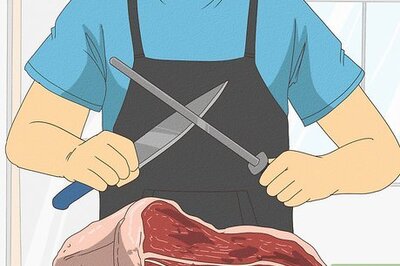
views
 It was the best of times for French wine. Though the English had already become ardent fans of the drink for quite a long time, wine turned sour on its long journey across the English Channel. Moreover, the prestigious Champagne, the topmost elixir from Southern France behaved like virtual molatov cocktail that would burst at the slightest pressure.
It was the best of times for French wine. Though the English had already become ardent fans of the drink for quite a long time, wine turned sour on its long journey across the English Channel. Moreover, the prestigious Champagne, the topmost elixir from Southern France behaved like virtual molatov cocktail that would burst at the slightest pressure.
But everything got solved with the invention of corks and sturdy glass bottles. So it was the best of times for the French wine.
With no more worries, the French industry looked cockily into a bright future. Then in 1863 vinegrowers in the country began to notice a curious thing happening around them. They were shocked and clueless. Grapevines were dying. Impossible! They took a closer look at the plants that were wilting as if they had caught the plant-form of tuberculosis.
It could be some invisible bugs, they guessed, but where did they suddenly arrive from!
One thousand years ago in America. The barbaric invaders from the North, the Vikings, saw a lot of tough-rooted vines in the New World. But the fruits tasted yucky. So when the European colonisers came and settled in America, the first thing they did was to bring European vines from the Continent to make their poison. The experiment failed as the frail vines from their homeland across the Atlantic could not stand the extreme conditions in America. Now the colonisers took the other way around. Why not take the American vines to Europe to see whether their taste would improve in the new soil?
By sending the American vines to the Continent, all that the colonisers intended was to seek a solution; they hardly knew they were sending home the problem as well.
Phylloxera, a plant lice, an aphid, hardly visible to human eye, and that which was obstinately stalling the European vine from taking root in America hitherto, was now on a new mission. It was crossing the ocean as a stowaway, or as a green Dracula buried deep inside the innocent-looking American vines.
Once the aphid landed on the Continent, especially in France, the homeland of vines, it dug its teeth deep into the rich spread of vine roots and leaves all around. Plants wilted by millions. The rampage began.
In a period of barely 15 years, almost half of French Vineyard were decimated with the rest teetering on the brink. The French economy was badly hit with thousands of grape growers thrown out of business and even from their vineyards which now looked like desert lands. Wages were cut to less than a half. In order to tide over the crisis of an international wine deficit, some traders resorted to using cheap sugar syrup and other adulterants and pressed it to do the work of wine. That drove a deep nail in the coffin of whatever reputation wine still salvaged from the wreck. People now were unsure of picking the original from the spurious wines that flooded the market.
For the first time ever since the emergence of wine, people began to turn their attention to other drinks like absinthe and whiskey.
The authorities sprang to action. More than 6 million acres of vineyards were destroyed to kill the blight. Many growers in a state of panic banked upon weird methods to save their vineyards. Some buried toads under each vine, and some others let their poultry into the vineyard hoping they would find their meat in the insects. Phylloxera prevailed. Meanwhile, a few scientists who had found that the killer had arrived from America now zeroed in on a solution. Even with this blight for many centuries, if America still had vineyards, there could also be a solution for the problem that arrived from there, they guessed. What about grafting European vines to aphid-resistant American rootstock and create new vines?
Well, the solution worked like magic. The reconstitution of the vineyards was a slow and tiresome process but the growers had no other option. The French wine industry was rebuilt from the vine root up.
The devil of the genie, named Phylloxera was finally put back in the bottle, but that doesn't mean the threat has disappeared forever. In 1983, phylloxera struck again in California, sending shivers down the spine of grape growers all around the world. With bitter memories and lessons from the past, they worked hard and could somehow tide over the crisis.
The only question that remains now is: did wine taste better before grafting?
There are places which remain unaffected by the Great Vine Blight of the nineteenth century. Could they answer the question? The purists hardly think so. Because the best vineyards of the yesteryears were mostly in France. They had all gone through the fire.
(Manu Remakant is a freelance writer who also runs a video blog - A Cup of Kavitha - introducing world poetry to Malayalees. Views expressed here are personal)


















Comments
0 comment